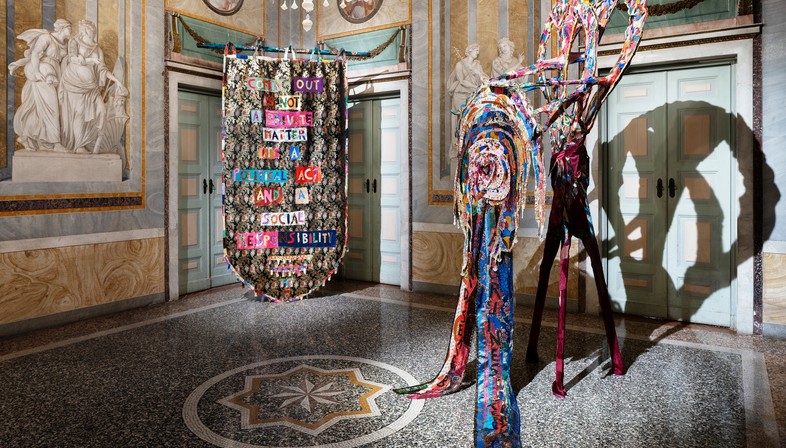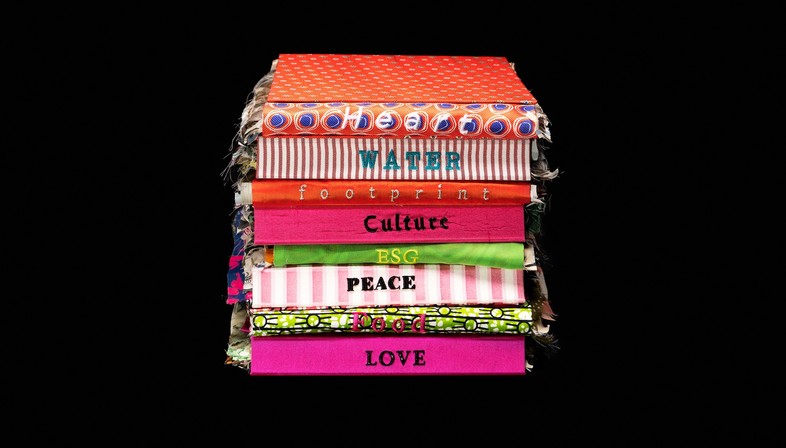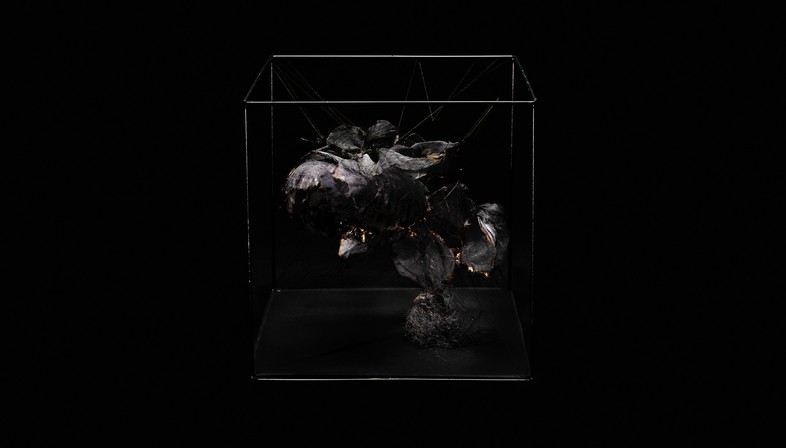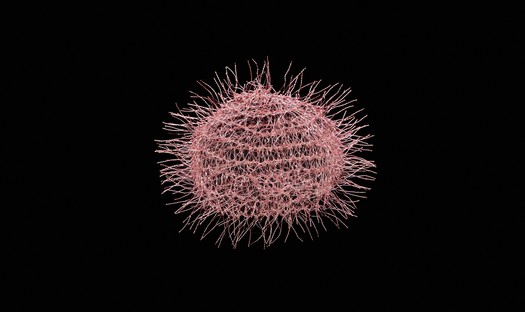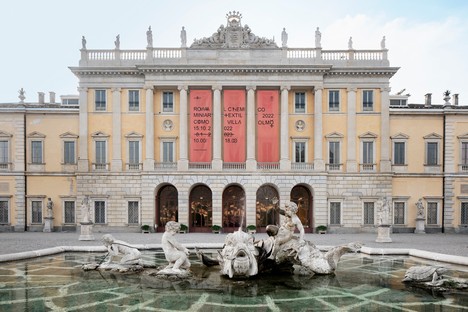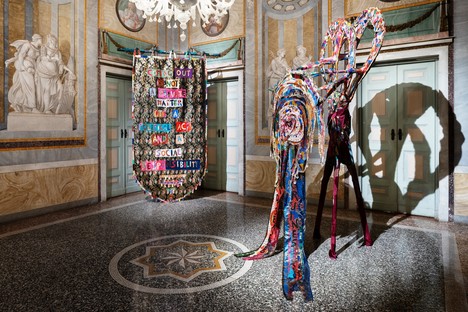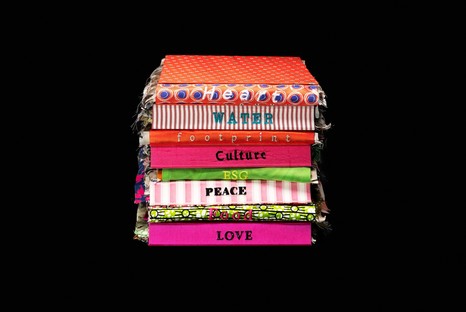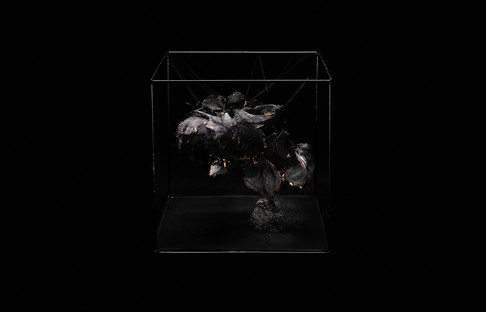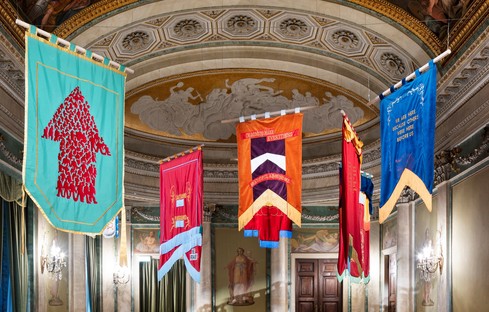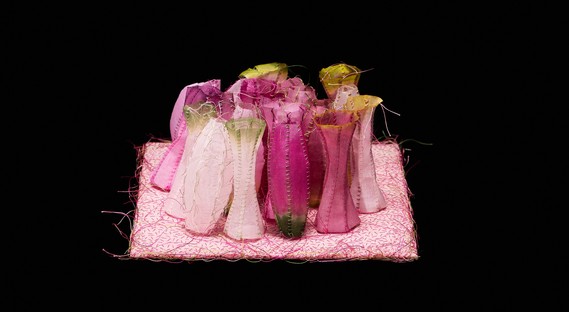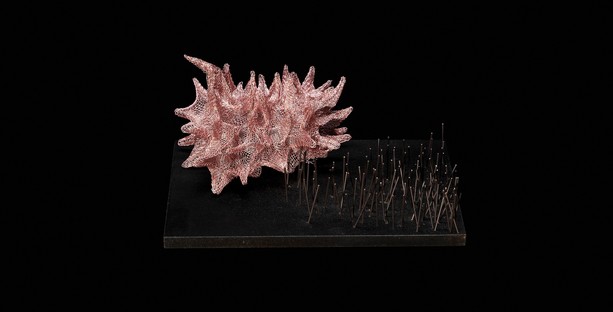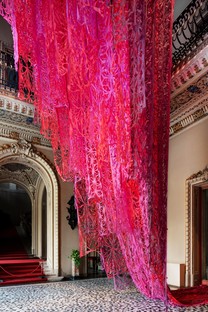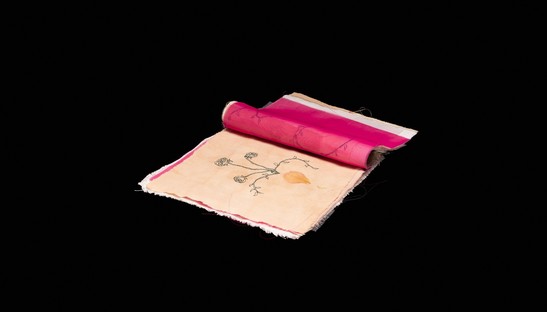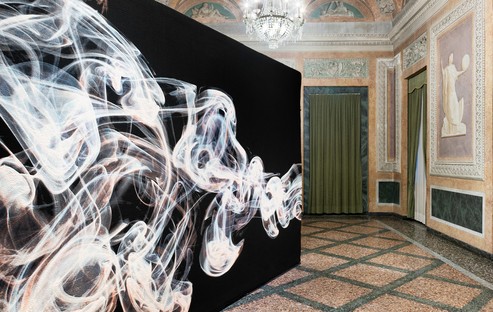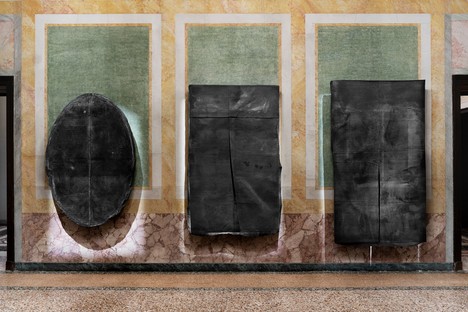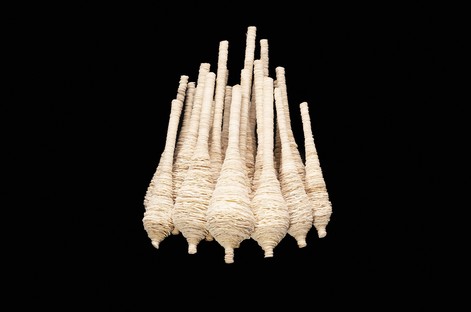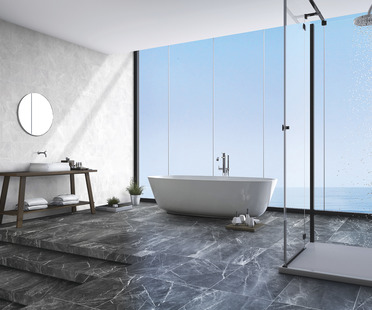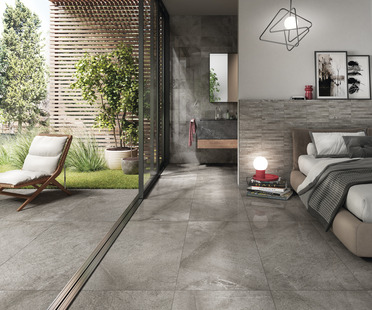17-11-2022
Threads, weaves, intertwining: textiles become art at Miniartextil
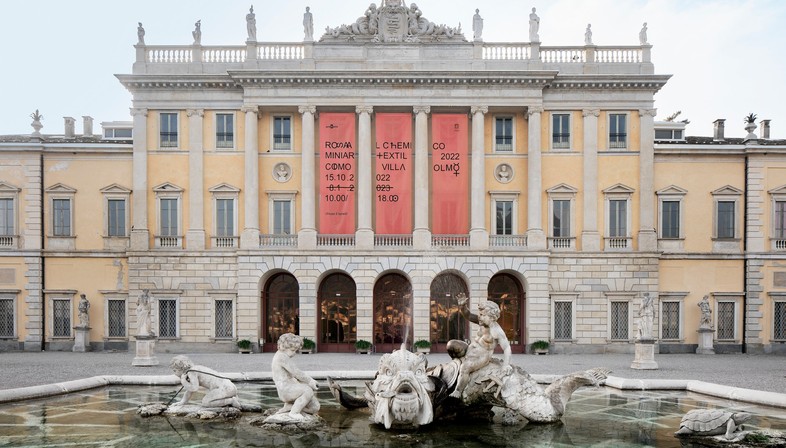
The grandiose scale of the place is unimaginable until you pass through the gates of Villa Olmo, in Como, an imposing neoclassical building like something out of the pages of Alessandro Manzoni, surrounded by an ancient garden and panoramic views of the lake. The halls of this historic villa, splendidly restored to its original splendour in a recent renovation project, host this year’s edition of the well-known fibre art exhibition Miniartextil, now in its thirty-first edition. The event has stood out right from the start for its unusual collection of miniature artworks (their size must be contained within an ideal cube measuring 20 cm per side) produced using materials and techniques from the world of textiles, in all its forms. And that’s not all: alongside these miniature works of art, the exhibition also features a collection of oversized artworks, also centring around textiles. All the works develop and interpret the theme selected for this year by the curators and organisers of the exhibition: Rosa Alchemico (Alchemic Rose). Rose as a flower and a colour, expressed here in an unusual form, that of alchemy, an ancient philosophy and experimental practice whose aims included the transformation and ennoblement of matter. The title sums up a number of aspects: the ability to transform things through colour, in this case a colour our culture views as oriented toward the feminine, and a mythological, mystical flower, to achieve a genteel but radical form of liberation. Alchemic processes take place in the background, creating an esoteric air of magic and mystery.
On the basis of the formula introduced by the founders of the initiative, the late Nazzarena Bortolaso, an entrepreneur and patron with a passion for contemporary art (who passed away in April), with artist and designer Mimmo Totaro, the projects showcased in Miniartextil are gathered together every year in response to an international call inspired by the selected theme, to which 234 artists responded this year, with projects received from all over the world. The jury selected 54 projects in June, ideally showcased in the villa’s sumptuous ballroom. The best way to admire them is one by one, in an itinerary full of surprises. They are flowers, organic, abstract and surreal shapes; they are miniature objects (such as a little sweater) or micro-architectures (a wooden cube containing burnt keys); fantastic elements (a pair of pink angel’s wings) and narrative compositions (a stack of little books with their titles embroidered in beadwork).
Beyond their disorienting, poetic themes, it is the materials and, above all, the techniques that strike the viewer: threads of all kinds (copper, silver, paper, recycled plastic) artfully braided or twisted together; reclaimed fabrics, inlaid, glued, printed, modelled, made three-dimensional using new stratagems and ancient techniques, combined with rocks, wood, glass, plant parts, nails and newspaper. The size limit (a 20 cm cube) forces the artists to condense their message, refine their techniques, sum up what they want to say in only a few highly expressive elements. The panel of judges, Mimmo Totaro, Paolo Bolpagni and Sergio Gaddi, awarded the prize for best artwork, in memory of Nazzarena Bortolaso, to Danielle Péan Le Roux for his mini-textile Black Rose with Gold Pearl.
The exhibition is tied to the local territory in multiple ways, according to Chiara Anzani, who organised Miniartextil with Paola Re: “Textile producers are among the most prominent voices in the local economy; in addition to supporting the exhibition, they definitely find it a source of creative inspiration.” As in other sectors, in textiles it is art that intuitively anticipates the trends: “The rose represents femininity, but it also encourages freedom, and lightness,” continues Chiara Anzani. These concepts are depicted in the monumental installation welcoming visitors to the exhibition: very tall drapery of non-woven fabric forming a cascade in various hues of pink and fuchsia, with a lacy openwork design, falling from above like a bride’s veil or a noblewoman’s train. Entitled ‘Cage’, the work is by Manuel Ameztoy, an Argentinian artist who explores the boundaries between architecture, ornamentation, sculpture and folklore. This spectacular, ostentatious piece evokes the theme of women’s clothing, which has often built a cage around the body, even when motivated by seduction. Ametzoy’s Cage introduces the exhibition of oversized artworks selected by curators Paolo Bolpagni, Sonia D’Alto and Giovanni Berera, who brought artists such as Marinella Senatore, Jacopo Benassi, Emma Talbot, Igshaan Adams, Jaime Poblete, and Pae White to the exhibition, to mention only a few, using textiles as a powerful means of expression.
Antonella Galli
Captions
Some of the works on exhibit at Villa Olmo, Como, in the exhibition Rosa Alchemico, open until 8 January 2023. Photo courtesy of Miniartextil Rosa Alchemico
01, 04, 05, 07, 08, 10, 13: Miniartextil 2022, Villa Olmo, Como: some of the 54 textile artworks (standard size 20x20x20 cm) selected for the exhibition
02, Villa Olmo, Como, home of the exhibition
03 Ruben Montini, A Moral Duty and Amori di serie B, sewn on wood (2021-2022), courtesy of the artist
06 Marinella Senatore, Protests forms: memory and celebrations, embroidery on theatrical velvet (2019 and 2020), courtesy of the artist and Mazzoleni London - Turin
09 Manuel Ameztoy, Cage, non-woven fabric, 2013, courtesy of the artist; photo by t-space Studio
11 Pae White, Untitled, cotton, polyester, wool and lurex, 2022, courtesy of the artist and Kaufman Repetto, Milan/New York; photo by t-space Studio
12 Jaime Poblete, Untitled, pigment, ash, salt and acrylic resin on folded, stitched upholstery fabric, 2019, courtesy of the artist










